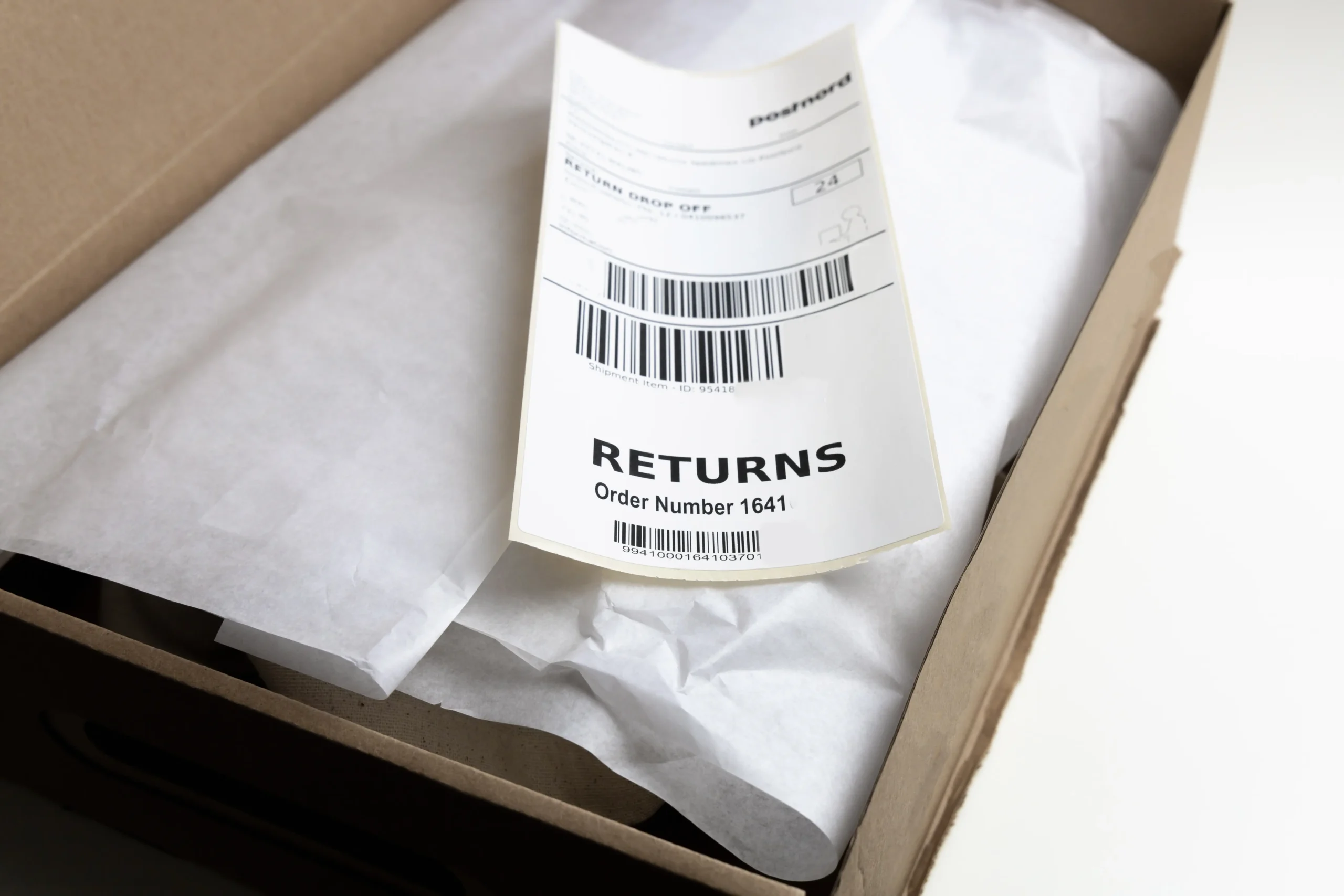What are shipping dimensions?
Shipping dimensions refer to the size of the package, mailer box, or pouch in which you ship your items.
Shipping companies use these shipping dimensions or measurements to calculate the cost of shipping, accordingly. When calculating shipping dimensions of a box, you need to know how to measure a box correctly to get the most efficient shipping rates.
This step-by-step guide tells you how to properly measure your shipping box dimensions, so you can estimate the shipping costs of your package.
How to Calculate Package Dimensions
When you buy a shipping box, the dimensions mentioned on it are related to its interior measurements of length, width, and height. This tells you whether or not your item will fit inside the box.
Once you place your item inside the box and pack it up, you’ll measure the outside dimensions of the shipping box since carriers charge shipping fees based on the outside measurements.
To measure the package dimensions, you’ll need to measure the length, width, and height of the box on the outside using a measuring tool like ruler or tape measure, and a pencil and a piece of paper to record your box measurements.
Measuring length for shipping boxes
When you’re looking at the top of the box, the longest side will be its length. It is also the side with the longest flap.
Measure the length from edge to edge and round it up to the nearest inch or centimeter. Write it down on a piece of paper.
Measuring width for shipping boxes
When you’re looking at the top of the box, the shorter side will be its width. It is the side with the shorter flap.
Measure the width by stretching your tape measure between the two extreme points and round it up to the nearest inch or centimeter. Note the measurement down on paper.
Measuring height for shipping boxes
For the height of the package, close the flaps and measure the box from the top end to the bottom end. Round it up to the nearest inch or centimeter and write the measurement on paper.
Measuring girth for shipping boxes
The girth of a package is the measurement around the non-length sides (width and height) of the box. You can calculate the girth of a box by multiplying the width and height measurements by two, and then adding them up. Here’s the formula for girth:
Girth = (2 x length) + (2 x width)
Dimensional Weight
Dimensional weight (or DIM weight) is a pricing technique that converts the cubic size of a package into a ‘dimension weight’. It is used by major shipping services (UPS, FedEx, and USPS) for both small parcels and freight shipments.
Also known as volumetric weight, dimensional weight measures the amount of space a parcel occupies in relation to its actual weight.
You’ll need to find out both the dimensional weight and actual weight of a package. The greater among the two will be the billable weight of the package (i.e. the shipping fees are charged based on whichever is greater).
To calculate the dimensional weight of a package, measure the length, width and height of the box. Next, multiply the three measurements (LxWxH) to calculate the cubic size of the box, and divide it by the carrier’s DIM divisor.
FedEx uses 139 as their standard DIM divisor, and for UPS and USPS, the standard DIM divisor is 166. While these numbers are standard, DIM divisors are negotiable with your carrier.
For example, if you send package that is 15” x 12” x 12” that weighs 8 lbs, the FedEx shipping rate calculation using the DIM pricing model will be as follows:
DIM weight = (Length x Width x Height) ÷ DIM divisor
= (15” x 12” x 12”) ÷ 139
= 2,160 cubic inches ÷ 139
= 15.54 lbs
Here the DIM weight is 7.54 lbs heavier than the actual weight, so it will be used as the billable weight.
Package Dimensions and Limits by Carrier
Different shipping carriers have different criteria for limits to package dimensions and weight. Let’s take a look at the limits set by USPS, UPS, and FedEx.
USPS Package Size Limit
Here’s a look at the dimensions of available small, medium, and large boxes and USPS flat rates:
Small Box: @ $9.45
8 11/16″ x 5 7/16″ x 1 3/4″
Medium Box: @ $16.10
11 1/4″ x 8 3/4″ x 6″
14″ x 12″ x 3 1/2″
Large Box: @ $21.50
12 1/4″ x 12 1/4″ x 6″
For USPS, the size and weight limits are:
108 inches in length
130 inches in combined length and girth
70 lbs in weight
UPS Package Size Limit
Here’s a look at the dimensions of available small, medium, large and extra large boxes and UPS flat rates:
Small Box: @ $12.40
6″ x 6” x 6”
8” x 6” x 5”
12” x 9” x 2”
Medium Box: @ $14.95
8” x 8” x 8”
12” x 9” x 6”
13” x 11” x 2”
Large Box: @ $19.60
10” x 10” x 10”
12” x 12” x 7”
15” x 11” x 6”
Extra Large Box: @ $24.30
12” x 12” x 12”
16” x 12” x 9”
18” x 12” x 6”
For UPS, the size and weight limits are:
108 inches in length
165 inches in combined length and girth
150 lbs in weight
FedEx Package Size Limit
Here’s a look at the dimensions of available medium, large and extra-large boxes and FedEx flat rates:
Medium Box: @ $15.70
11-1/2″ x 2-3/8″ x 13-1/4″
8-3/4″ x 4-3/8″ x 11-1/4″
Large Box: @ $24.20
12-3/8″ x 3″ x 17-1/2″
8-3/4″ x 7-3/4″ x 11-1/4″
Extra Large Box: @ $39.10
11-7/8″ x 10-3/4″ x 11″
15-3/4″ x 14-1/8″ x 6″
For FedEx Express, the size and weight limits are:
108 inches in length
130 inches in combined length and girth
150 lbs in weight
For FedEx Ground, size and weight limits are:
108 inches in length
165 inches in combined length and girth
150 lbs in weight
FAQs
What is the standard box size?
Shipping companies set no standard size of shipping boxes. Simply find the right box that can appropriately fit your items.
What order are dimensions listed in?
In logistics terms, the first dimension is length, then width is listed, followed by height. When you write or tell someone the dimensions of a box, it should follow that order: Length x Width x Height.
What size is considered a large shipping box?
Shipping companies differ in terms of what they consider a large or oversize shipping box.
- A USPS package is considered oversized if it measures greater than 108” in combined length and girth, but does not exceed 130”, and/or weighs more than 70 lbs.
- FedEx defines a package as oversized if it has dimensions of more than 130” of combined length and girth, or weighs heavier than 90 lbs.
- A UPS package is considered oversized if it measures more than 165” in combined length and girth, or the length is not more than 108”, and/or weighs more than 150 lbs.
*Shippers have to pay surcharges for large packages as well.
Optimize the size of your shipments with Sifted Logistics Intelligence
Follow this guide to ensure that you measure your shipping dimensions properly to get the best shipping rates. Even a minor miscalculation in package dimensions can lead to significant upcharges from your shipping carriers.
Sifted Logistics Intelligence helps eCommerce businesses and shippers alike to save money by optimizing the size of shipments based on costs, and avoid shipping surcharges.
Ready to optimize your packaging expenses? Get a free demo from Sifted!











